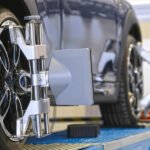

Why Kenyan Mechanics Let You Down Always: A Recipe for Automotive Frustration
In Kenya, a sputtering engine isn’t just the harbinger of breakdown; it’s a potential gateway to an automotive odyssey of disappointment. While countless skilled mechanics grace the land, a significant number fall short, leaving drivers fuming and their wallets emptier. Let’s dissect the anatomy of this automotive malaise, where good intentions often pave the way for mechanical mayhem.
Below Par Training
The first pitfall lies in the training: many Kenyan mechanics wear their expertise earned through apprenticeship, not formal education. A year or two under a seasoned wrench-turner may equip them with practical skills, but the intricacies of modern automobile technology often remain shrouded in mystery. These veterans of older car generations struggle to translate their knowledge to the complex dance of fuel injectors and onboard computers powering today’s vehicles. This knowledge gap leads to misdiagnoses, unnecessary repairs, and ultimately, a frustrated clientele.
No Use of Manufacturers Manuals:
Speaking of diagnoses, persuasive sentences seem to flow more readily than oil in many Kenyan garages. Manuals provided by manufacturers? Merely suggestions. Mechanics often rely on intuition and experience, bypassing crucial diagnostic steps. The consequences? Plastic panels snapped from forceful prying, delicate sensors rendered inoperable by clumsy tinkering, and the ever-present silicon sealant, masquerading as a high-tech panacea for every mechanical ailment. This Frankensteinian approach may bring short-term respite, but it sows the seeds of future breakdowns, leaving the car a fragile patchwork quilt rather than a well-oiled machine
Short Cut Solutions:
Then comes the siren song of the shortcut. Tracking down the root cause of a problem is a time-consuming endeavor, and time, our mechanics often believe, is money. So, they slap on a band-aid solution, a temporary fix designed to tide the car over until, inevitably, the client returns, pockets lighter and frustration heavier. This “fix-it-later” mentality might keep the garage doors open, but it leaves cars in a perpetual state of deferred maintenance, a ticking time bomb waiting to explode at the worst possible moment.
Counterfeit Spare Parts
And let’s not forget the elephant in the workshop: fake spare parts. While clients shell out for genuine components, their cars often receive cheap imitations, leaving the garage owner with a tidy profit and the driver with a ticking time bomb under the hood. This isn’t just unethical; it’s downright dangerous. Counterfeit brake pads can fail, substandard filters can contaminate sensitive systems, and imitation sensors can throw the entire engine into disarray.
Away with Specialists:
Finally, specialization takes a backseat in many Kenyan garages. A “jack-of-all-trades” mentality prevails, leading mechanics to tackle complex issues beyond their expertise. Gearbox woes become wrestling matches, electrical gremlins turn into exorcism attempts, and suspension problems are treated with wishful thinking and copious amounts of grease. The result? A car mangled by misplaced confidence, leaving the owner yearning for a specialist who speaks the language of their ailing vehicle.
The Road Ahead
This isn’t an indictment of all Kenyan mechanics. Plenty of skilled professionals navigate the automotive landscape with honesty and expertise. But for those who fall short, the consequences are real: financial burdens, safety hazards, and eroded trust. To bridge this gap, a multi-pronged approach is needed. Formalized training programs can equip mechanics with the knowledge to tackle modern vehicles. Regulatory bodies can crack down on the use of counterfeit parts and promote ethical practices. And drivers themselves can educate themselves, learning to differentiate between a genuine diagnosis and a persuasive sales pitch. Ultimately, only by addressing these issues can we transform the Kenyan automotive landscape from a realm of frustration to a reliable haven for even the most temperamental vehicle.
Add a comment Cancel reply
Categories
- Car Gadgets (17)
- Car News (33)
- Car Reviews (43)
- Car Wars (7)
- Mechanicals (32)
- Uncategorized (2)
Recent Posts
About us

Popular Tags
Related posts


Essential Car Repair Skills Every Driver Should Know

All About Wheel Balancing








